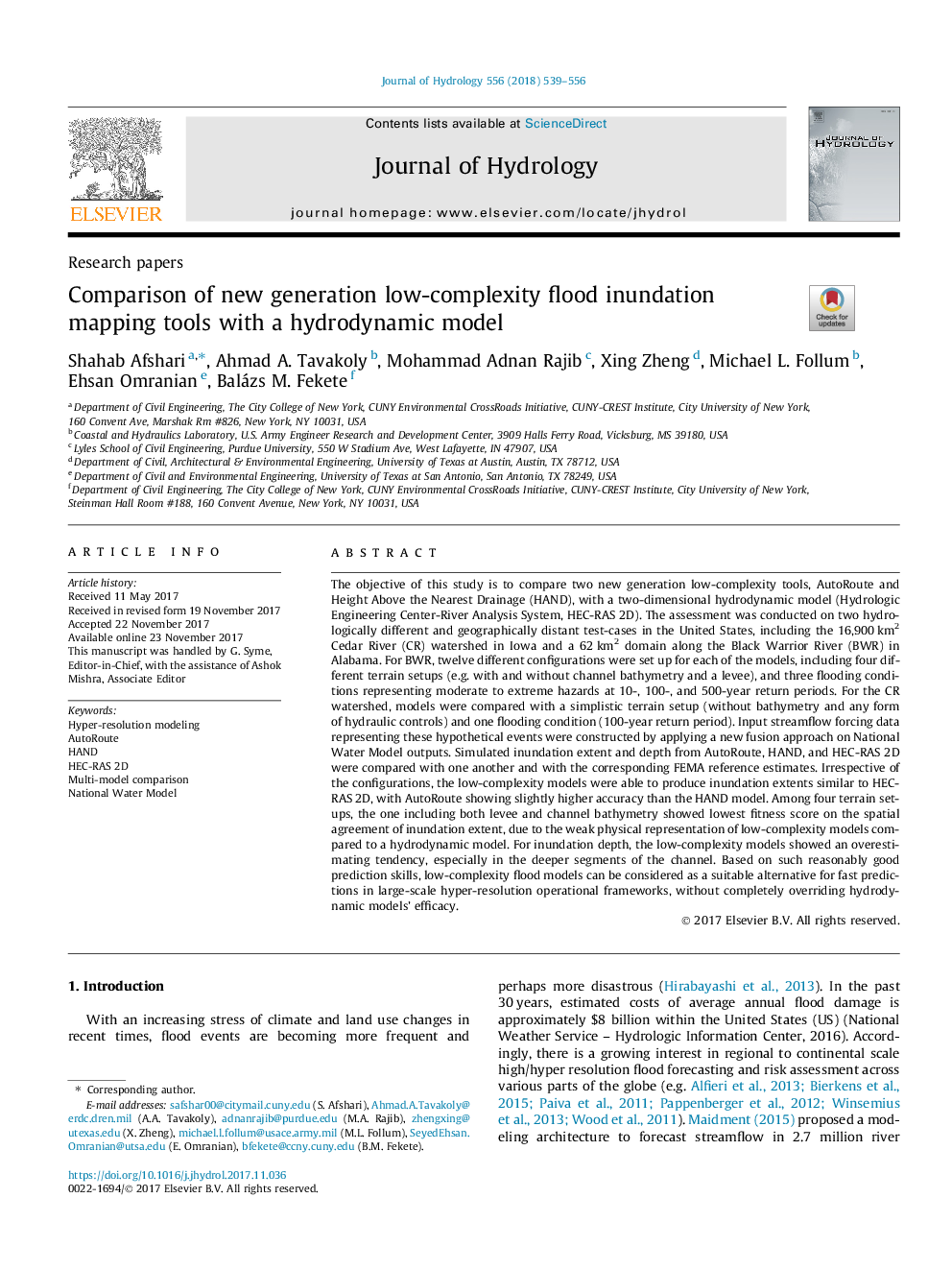| کد مقاله | کد نشریه | سال انتشار | مقاله انگلیسی | نسخه تمام متن |
|---|---|---|---|---|
| 8895154 | 1629898 | 2018 | 18 صفحه PDF | دانلود رایگان |
عنوان انگلیسی مقاله ISI
Comparison of new generation low-complexity flood inundation mapping tools with a hydrodynamic model
ترجمه فارسی عنوان
مقایسه ابزار نقشهبرداری سیلاب با کمبود پیچیده نسل جدید با مدل
دانلود مقاله + سفارش ترجمه
دانلود مقاله ISI انگلیسی
رایگان برای ایرانیان
کلمات کلیدی
موضوعات مرتبط
مهندسی و علوم پایه
علوم زمین و سیارات
فرآیندهای سطح زمین
چکیده انگلیسی
The objective of this study is to compare two new generation low-complexity tools, AutoRoute and Height Above the Nearest Drainage (HAND), with a two-dimensional hydrodynamic model (Hydrologic Engineering Center-River Analysis System, HEC-RAS 2D). The assessment was conducted on two hydrologically different and geographically distant test-cases in the United States, including the 16,900â¯km2 Cedar River (CR) watershed in Iowa and a 62â¯km2 domain along the Black Warrior River (BWR) in Alabama. For BWR, twelve different configurations were set up for each of the models, including four different terrain setups (e.g. with and without channel bathymetry and a levee), and three flooding conditions representing moderate to extreme hazards at 10-, 100-, and 500-year return periods. For the CR watershed, models were compared with a simplistic terrain setup (without bathymetry and any form of hydraulic controls) and one flooding condition (100-year return period). Input streamflow forcing data representing these hypothetical events were constructed by applying a new fusion approach on National Water Model outputs. Simulated inundation extent and depth from AutoRoute, HAND, and HEC-RAS 2D were compared with one another and with the corresponding FEMA reference estimates. Irrespective of the configurations, the low-complexity models were able to produce inundation extents similar to HEC-RAS 2D, with AutoRoute showing slightly higher accuracy than the HAND model. Among four terrain setups, the one including both levee and channel bathymetry showed lowest fitness score on the spatial agreement of inundation extent, due to the weak physical representation of low-complexity models compared to a hydrodynamic model. For inundation depth, the low-complexity models showed an overestimating tendency, especially in the deeper segments of the channel. Based on such reasonably good prediction skills, low-complexity flood models can be considered as a suitable alternative for fast predictions in large-scale hyper-resolution operational frameworks, without completely overriding hydrodynamic models' efficacy.
ناشر
Database: Elsevier - ScienceDirect (ساینس دایرکت)
Journal: Journal of Hydrology - Volume 556, January 2018, Pages 539-556
Journal: Journal of Hydrology - Volume 556, January 2018, Pages 539-556
نویسندگان
Shahab Afshari, Ahmad A. Tavakoly, Mohammad Adnan Rajib, Xing Zheng, Michael L. Follum, Ehsan Omranian, Balázs M. Fekete,
